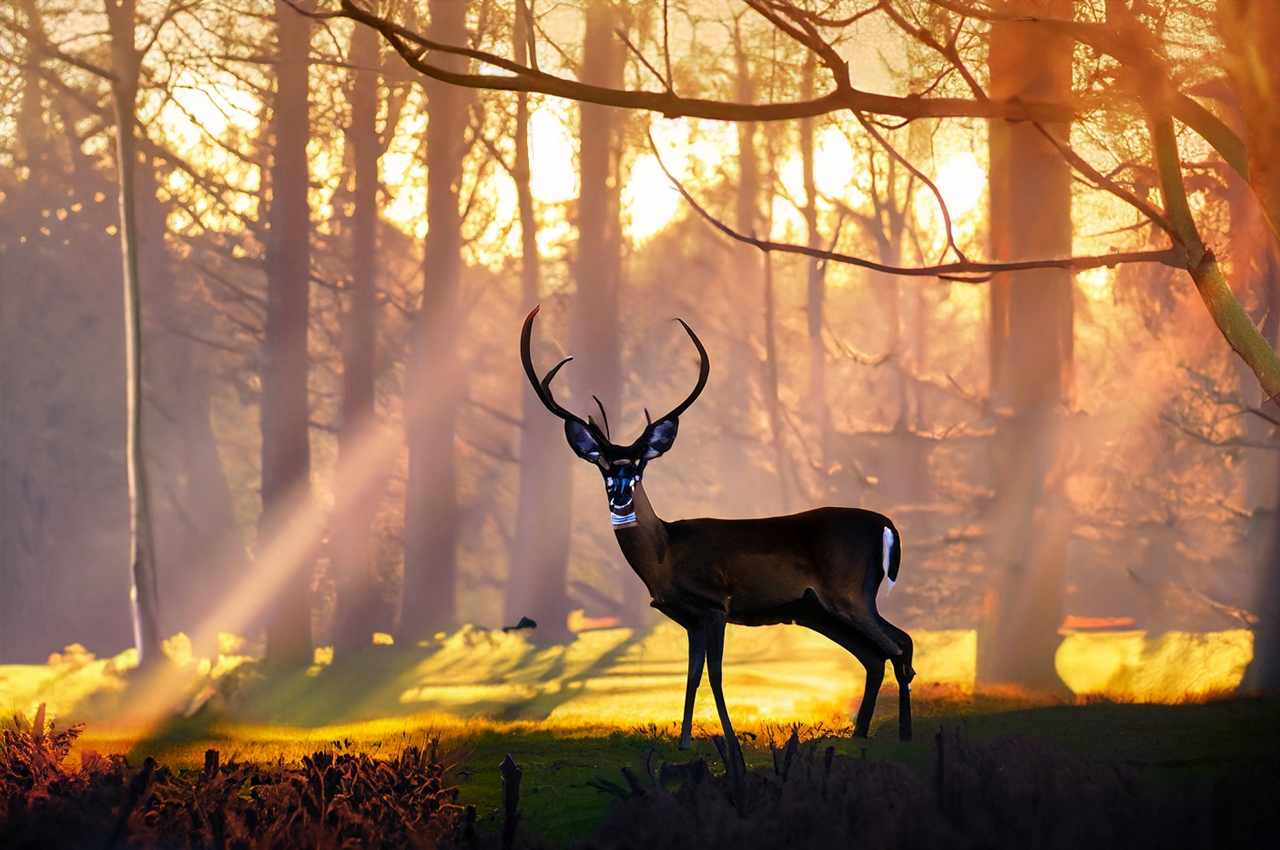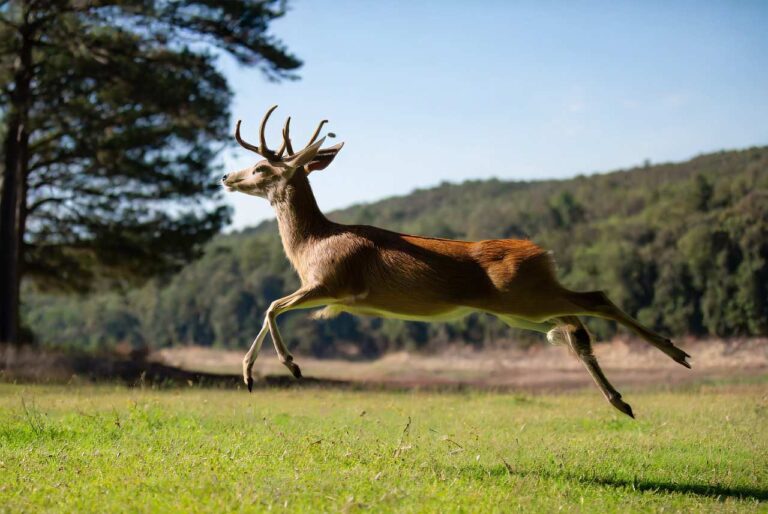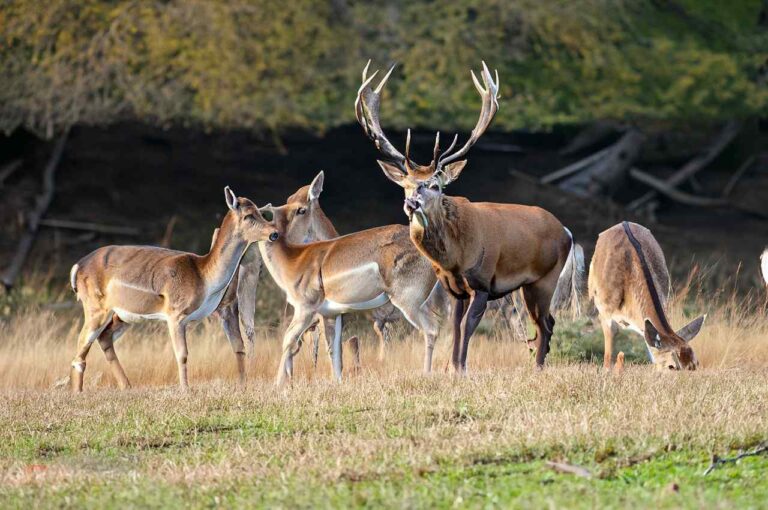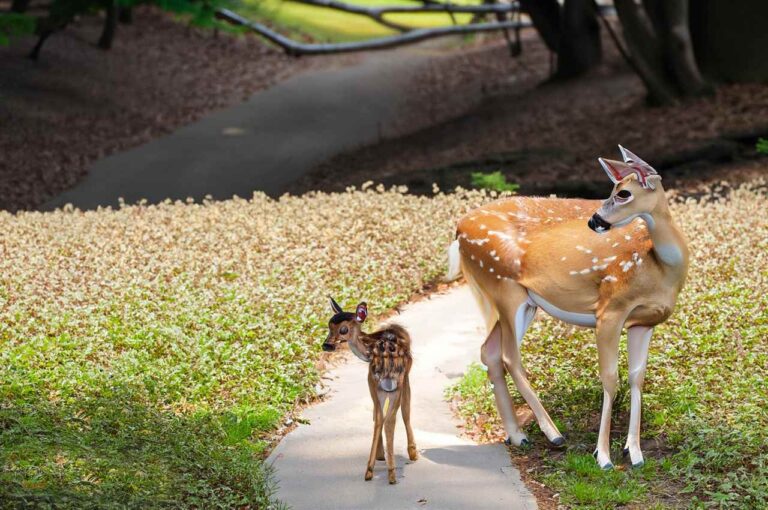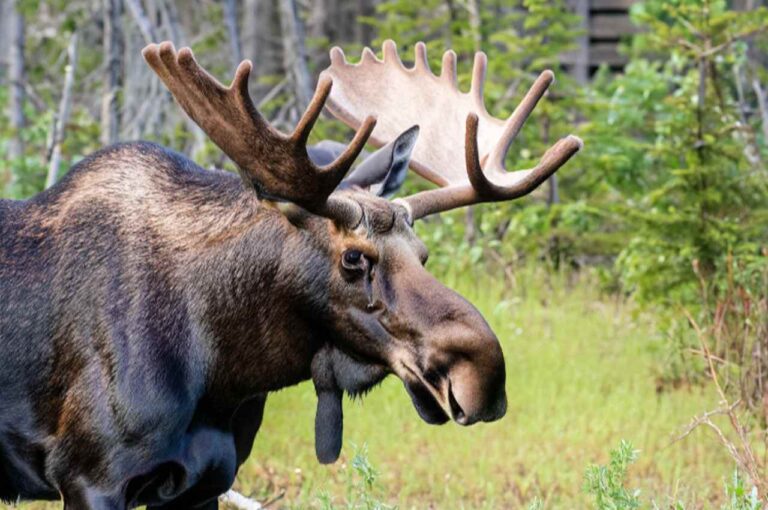Are Deer Nocturnal, Crepuscular, or Diurnal Animal: Why Does It Matter?
Many people wonder, are deer nocturnal because they often spot them during the night. Wildlife lovers and hunters have long been fascinated by deer, elegant and elusive. Deer activity patterns—when do they traverse woods and fields—are fascinating. Do they live during the day or at night, as many believe? The answer lies in their complex daily routines. Deer are fascinating crepuscular creatures. Wildlife lovers, hunters, drivers, and anybody interested in nature should understand these activity patterns. This page examines deer activity, including why they are crepuscular, how it varies with the seasons, and what variables affect their daily routines.
Are Deer Nocturnal, Crepuscular, or Diurnal?
Deer are crepuscular animals, which mean they are most active at dawn and night. This is due to the fact that deer have keen vision and hearing, which they may utilize to their advantage during certain times. Because there is more food available in the spring and summer, deer are also more active during those seasons.
Knowing whether deer are nocturnal, crepuscular, or diurnal is important for a few reasons. It may firstly assist you in avoiding interactions with deer. You may stay away from locations where deer are likely to be during these times if you are aware that they are most active around dawn and dusk. Additionally, it might improve your deer hunting efficiency. You may boost your chances of success by hunting during the times of day when deer are most active. Finally, it may aid in your understanding of deer behavior. You may have a better grasp of how deer interact with their surroundings and with one another by knowing when they are most active.

Seasonal Deer Activity Patterns
| Season | Activity Patterns |
|---|---|
| Spring | More daytime activity as food sources grow. |
| Summer | Concentrated crepuscular activity for cooler temperatures. |
| Fall | Rutting season leads to increased daytime activity. |
| Winter | Midday activity when snow covers food sources. |
Deer Species and Activity Patterns
| Deer Species | Predominant Activity Pattern |
|---|---|
| White-tailed Deer | Primarily Crepuscular |
| Mule Deer | Primarily Crepuscular |
| Roe Deer | Primarily Crepuscular |
| Red Deer | Primarily Crepuscular |
| Fallow Deer | Primarily Crepuscular |
Factors Influencing Deer Activity Patterns
| Factor | Influence on Deer Activity Patterns |
|---|---|
| Temperature | Deer are more active when temperatures are cooler. |
| Rainfall | Heavy rain may curtail activity until it clears. |
| Wind | Strong winds increase deer movement. |
| Approaching Fronts | Deer may forage before a front, increase after. |
| Snow Cover | Deep snow inhibits movement until trails develop. |
| Food Availability | Preferred food sources impact deer activity. |
| Rutting Behavior | Rutting season causes increased daytime activity. |
| Human Disturbance | Human activity can modify deer's natural patterns. |
Impact of Human Activity on Deer Behavior
| Human Activity | Influence on Deer Behavior |
|---|---|
| Hunting Pressure | Deer may become more nocturnal in order to escape hunters. |
| Urban Development | Alters deer's natural patterns in suburban areas. |
| Nocturnal Lighting | Allows deer to remain active longer after dark. |
| Landscaping Equipment Noise | During weekends, forces deer into cover throughout the day. |
Understanding the Activity Cycles of Deer
Knowing the hours of the day when deer are most active is essential for anybody who enjoys watching nature or shooting deer. Since we often observe deer feeding at night, it may seem at first that they are nocturnal animals. Deer, on the other hand, really follow more intricate daily activity patterns. A closer examination of the deer’s behavioral habits is necessary to determine if they are nocturnal, crepuscular, or diurnal animals.
Defining Nocturnal, Diurnal, and Crepuscular
| Activity Category | Description |
|---|---|
| Nocturnal | Primarily active at night. |
| Diurnal | Primarily active during daylight hours. |
| Crepuscular | Primarily active during dawn and dusk. |
| Metaturnal | Active at irregular hours during the day/night. |
Defining these categories is necessary before we can comprehend the behaviors of deer:
- Nocturnal: Animals that are nocturnal are most active at night. A few examples include raccoons, owls, and bats.
- Diurnal: Diurnal animals spend the most of their time active during the day and sleeping at night. Both chimpanzees and humans are nocturnal.
- Crepuscular: Crepuscular animals are most active in the dawn and dusk hours of twilight. Examples include skunks, bunnies, and deer.
- Metaturnal: Some deer could wake up irregularly during the 24-hour cycle, whether during the day or at night.
Deer display a variety of characteristics rather than neatly fitting into any one group. Learn more about the everyday patterns of deer behavior by reading on.
Deer Are Primarily Crepuscular
Although deer may engage in nighttime or daytime activities, they are mostly crepuscular creatures. When the light is the lowest, at dawn and dusk, when their eyesight is best, activity is at its highest. This trend is explained by many factors:
• Lower temps – Deer can browse more effectively in lower temperatures. Deer may get too hot during the daytime.
• Low light aids in camouflaging deer from prospective predators. They can modify their vision more than predators can.
• Transitory periods – Dawn and dusk are times when nocturnal and nocturnal predators switch roles, giving deer a safer window of opportunity for activity.
• Human disturbance – In areas where humans are present, deer have learned to be active at times when people are least bothersome.
Deer have thus adapted to benefit from the crepuscular hours. But other elements may also have an impact on their behavior.
Seasonal Behavioral Changes
Deer generally engage in crepuscular activity, although the time of year affects how closely they adhere to this cycle.
- Spring: As food sources expand in the spring, deer start to become more active throughout the day.
- Summer: Due to the abundance of food, activity is focused during the colder crepuscular hours.
- Fall: The rutting season starts, and deer are out and about all day searching for partners.
- Winter: When food sources are covered in snow, deer are more likely to be active in the middle of the day.
Deer thus carefully adhere to their crepuscular inclinations in the spring and summer. Their propensity to only be active between dawn and dark is overcome in the autumn and winter by the need to procreate and locate food.
How Weather Affects Activity
Deer migration is also influenced by the daily and seasonal weather:
- Colder temperatures – In order to increase body warmth and obtain food, deer become more active in the cold.
- Rainfall – A little drizzle may not have an effect on behavior, but heavier downpours often stop activity until the skies clear.
- Wind – Since deer depend more on vision for security in strong winds, mobility is actually increased.
- Approaching fronts – Deer may increase their foraging as fronts approach. Cooler temperatures after it passes encourage exercise.
- Snow – Until trails form, deep snow prevents deer from moving. Deer then stay on well-traveled paths.
Deer activity peaks may be predicted by observing weather patterns. But the daily fluctuation in deer behavior is influenced by the weather.
The Impact of Food Sources
The location of preferred food sources is another element that influences deer activity:
- Deer may emerge sooner or remain active longer in agricultural regions to get premium crops.
- Deer spend more time eating beneath oak trees in the autumn when the acorns are fully developed.
- Deer migration is caused by food plots that have been created purposely to attract them.
- When snow covers the vegetation in winter, deer wander outside during the daytime hours in quest of any nourishment.
Understanding the local food supplies will help you understand the deer’s movement. However, availability might vary suddenly, keeping deer alert.
Rutting Behavior
Bucks become quite busy, even in the middle of the day, searching for receptive does during the autumn rut, or mating season. Bucks in rut pay close attention to scrapes and rubs.
This need to mate causes crepuscular patterns to be ignored. In quest of hot does, bucks wander about at all hours of the day and night. Bucks in rut are compelled by hunting pressure to become more nocturnal.
Therefore, the height of rut is the ideal time to watch deer activity and mobility throughout the midday. Breeding instincts take precedence over hunger.
How Humans Impact Deer Activity
Human actions often alter deer behavior in regions where suburban development has negatively harmed deer habitat:
- Deer are pushed into hiding throughout the day on weekends by the noise of landscaping equipment.
- Deer grow more nocturnal as a result of human hunters, which helps them evade them.
- Deer may be seen moving about more after dark because of excessive evening lights.
As a result, the deer patterns that are least impacted by direct human involvement may be seen there. However, understanding how nearby human activity affects deer in the region is helpful for hunters or wildlife observers.
Frequently Asked Questions
Are deer nocturnal animals?

No, deer are not strictly nocturnal. Although certain deer species may engage in nocturnal activity, or being most active at night, this is not typical for most deer. Instead, it is more correct to refer to deer as crepuscular animals since they are most active in the early morning and late evening. They are often seen grazing during these periods of reduced visibility, however they are not always completely active all night.
Are deer diurnal animals?
Deer do not just graze throughout the day. While deer may exhibit some daytime activity, it varies across species and relies on things including environmental circumstances and human activities. Diurnal animals are more active during the day. Some deer may have stronger nocturnal inclinations, particularly in areas with less human interference. However, they normally only engage in crepuscular activity.
What is crepuscular behavior in deer?
Deer’s prime nocturnal activity, or around dawn and dusk, is referred to as crepuscular behavior. Deer are more active at these periods and take part in behaviors like feeding and mating. Deer benefit from crepuscular activity because it helps them stay away from both nocturnal and diurnal predators by taking advantage of the reduced visibility during these transitional times.
Why does it matter whether deer are nocturnal, crepuscular, or diurnal?
There are a number of reasons why it is crucial to comprehend deer behavior patterns. Hunting expeditions may be planned to coincide with the periods when deer are most active, boosting the likelihood of a successful hunt. Deer-vehicle incidents may be avoided by drivers being more careful at dawn and dusk since they are aware that deer are crepuscular.
What factors influence deer's activity patterns?
Human activity, environmental circumstances (such as temperature and season), and the particular deer species may all affect the deer’s activity patterns. Deer may alter their activity patterns in response to human disruptions like hunting and urban growth. Deer can adjust to temperature changes according to the weather circumstances. Depending on their distinct characteristics and surroundings, several species may display diverse patterns of activity.
Do deer change their activity patterns throughout the year?
Seasonal changes in deer activity patterns are common. For instance, they are more active during the day in the autumn when they are out searching for higher calorie meals like nuts and acorns to prepare for the winter. In contrast, they concentrate on eating greens in the summer and could be more active after dusk.
Why are deer primarily crepuscular?
Although the reasons for deer’s mostly crepuscular activity are unclear, numerous ideas contend that it has developed as an environment adaptation. As many of their natural predators are either diurnal or nocturnal, the reduced visibility at dawn and dusk may help them avoid them. Furthermore, the more pleasant settings for their activities may be provided by the evening’s cooler temperatures.
Can deer be active at night?
Some deer may engage in nocturnal activity and be active at night. The majority of deer species do not, however, exhibit behavior like this. Deer activity patterns may vary depending on things including human disturbances, the habitat, and particular species features. However, they are mainly regarded as crepuscular creatures.
Do deer sleep during the day or night?
Unlike diurnal animals, deer do not have a set schedule for sleeping. Instead, their sleep habits are more erratic. They may sleep both during the day and at night, but their naps are usually shorter, and they are always on the lookout for danger. To reduce the chance of being attacked by predators, they often choose safe places to sleep.
Are there any benefits to deer being crepuscular?
Crepuscular deer do have a number of advantages. They are able to evade the increased activity of both nocturnal and diurnal predators because to their crepuscular habit. They may search for food during times of transition when there are fewer predators around. It is believed that this behavior is an evolutionary adaption that improves their chances of surviving in their native environments.
Conclusion
For hunters and Wildlife enthusiasts, knowing Are Deer Nocturnal, Crepuscular, or Diurnal, can significantly impact the success of their hunting expeditions and gain valuable insight. Deer go through intricate daily cycles of activity. Due to their crepuscular habits, they are most active during dawn and dusk. However, a number of variables affect how well they adhere to these cycles. Deer may be active at irregular times because to the weather, food availability, breeding impulses, and human disturbances. We can forecast when deer are most likely to be moving by comprehending these factors. Deer may seem to be nocturnal or diurnal at first appearance, but they have evolved into the classic crepuscular species as a result of their evolutionary adaptations.
- Wyoming Deer Season 2025-2026 New Schedule & Rules - 15 September 2025
- Wisconsin Deer Season 2025-2026: WI Deer Hunting Guide [Schedule, Rules, Licenses] - 15 September 2025
- West Virginia Deer Season 2025-2026 Complete Date & Guide - 15 September 2025
